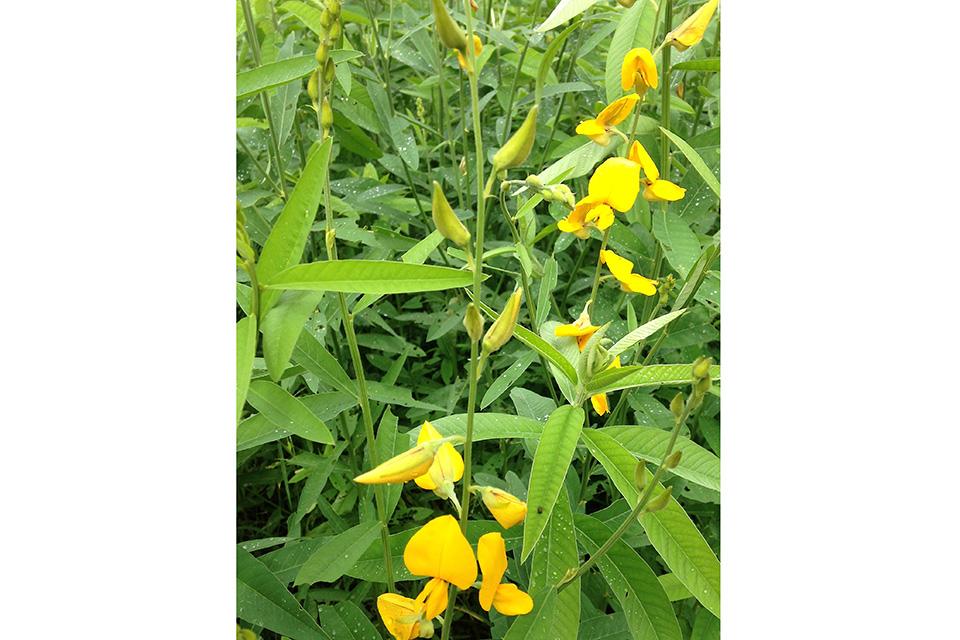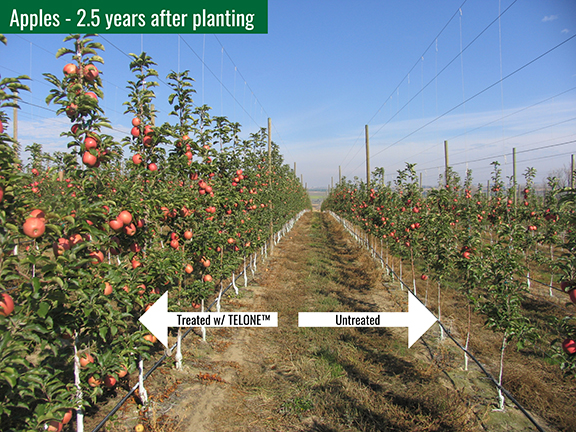Choose Cover Crops That Suppress Pathogens in Your Vegetable Plantings
Lately, cover crops are attracting renewed attention because growing them can trap carbon dioxide and sequester it when residues are incorporated into soil. Cover crops also deserve attention for their contributions to integrated, sustainable management of vegetable diseases.
Cover crops provide two primary benefits to disease management: rotation crops (or break crops in disease cycles) and a ready source of organic matter to replenish this ephemeral resource that breaks down all too quickly in warm, moist, southeastern soils.
Grains, legumes, and brassicas are all good cover crops. Grains are non-host crops for many vegetable pathogens, legumes produce organic nitrogen to support a diverse soil microbiome, and brassicas naturally suppress pathogens by producing isothiocyanates.
The SARE (Sustainable Agriculture Research and Education) program offers a free, basic primer on cover crops online. My favorite section of this manual is the detailed descriptions of the cover crops and how best to use them. In general, more is better. Mixtures of a grain and a legume outperform single species.
Unfortunately, the manual has only one section on the many different brassica cover crops. In Europe and Australia, brassica and legumes are sometimes seeded together to reap the combined benefits each cover crop provides, namely pest suppression and organic nitrogen, respectively.
Summer Cover Crops
In the Southeast, the long growing season allows summer cover crops to be grown between spring and fall vegetable crops. For example, there are three months between summer squash that’s finished in June and a collard crop planted in October to be harvested for the New Year’s Day market.
The best cover crops for summer are heat tolerant and grow rapidly. Based on observations of summer cover crops grown here at the Coastal Research and Education Center:
• Buckwheat is surprisingly heat tolerant.
• Japanese millet (Echinochloa esculenta) is easy to incorporate.
• The legume sunn hemp (Crotalaria juncea) is not a host for the southern root-knot nematode.

Sunn hemp
Photo by Anthony P. Keinath
• Sorghum-Sudan grass hybrids grow quickly, but sometimes the thick residue stunts subsequent vegetable crops.
• Drill sunflowers solid, instead of seeding in rows, to prevent weeds from growing between plants.
• We like ‘Regal Graze’ ladino-type white clover (Trifolium repens) for a year-round cover crop, because it maintains a thick stand to choke out weeds.
Cover Crops and Pathogens
Grains are nonhosts or poor hosts for most vegetable pathogens, so they are preferred cover crops for rotations in vegetable systems, because no vegetables, except sweet corn, are in the grass family. Since sweet corn (Zea mays) is in a different plant genus than rye, wheat, oats, and other grains used as cover crops, few pathogens spread from grains to corn. One exception is rye, which should not be planted before sweet and field corn. A colleague at Iowa State discovered that decomposing rye residues stunt corn seedlings and stimulate the pathogen Pythium, leading to seed rot and poor stands.
Field peas or Austrian winter peas should be avoided in most vegetable crop rotations because they are susceptible to white mold (Sclerotinia sclerotiorum). Better choices for legumes are clovers and vetches (pictured below). Even though they may get white mold, the disease on these crops is caused by a different fungus (Sclerotinia trifoliorum) named after clover (Trifolium) that rarely infects vegetables.

Hairy vetch
Photo by Virginia DuBose
Nitrogen, including organic nitrogen in cover crops, stimulates the fungus Rhizoctonia. Avoid legumes and immature “green” cover crops in fields to be planted to beets, potatoes, or head and stem brassicas, vegetables that are particularly susceptible to Rhizoctonia damping-off, scurf, and wirestem, respectively. Alternatively, allow three to four weeks between disking and seeding or transplanting for the initial flush of nitrogen to pass.
I also found that using legumes as killed cover crop mulches on broccoli and collards increases wirestem, again, because nitrogen leaching from the residue “powered up” Rhizoctonia.
On the other hand, tilling in dry, mature rye suppresses Rhizoctonia, probably because the high C:N straw ties up nitrogen in the soil, based on an on-farm study supported by the Southern SARE program. Oats is more stimulating than rye because of its higher nitrogen content. Among the seven legume cover crops and mixtures tested, hairy vetch plus rye stimulated Rhizoctonia the least.
Cover crops offer many benefits to organic and conventional vegetable growers, including options for sustainable disease management.










